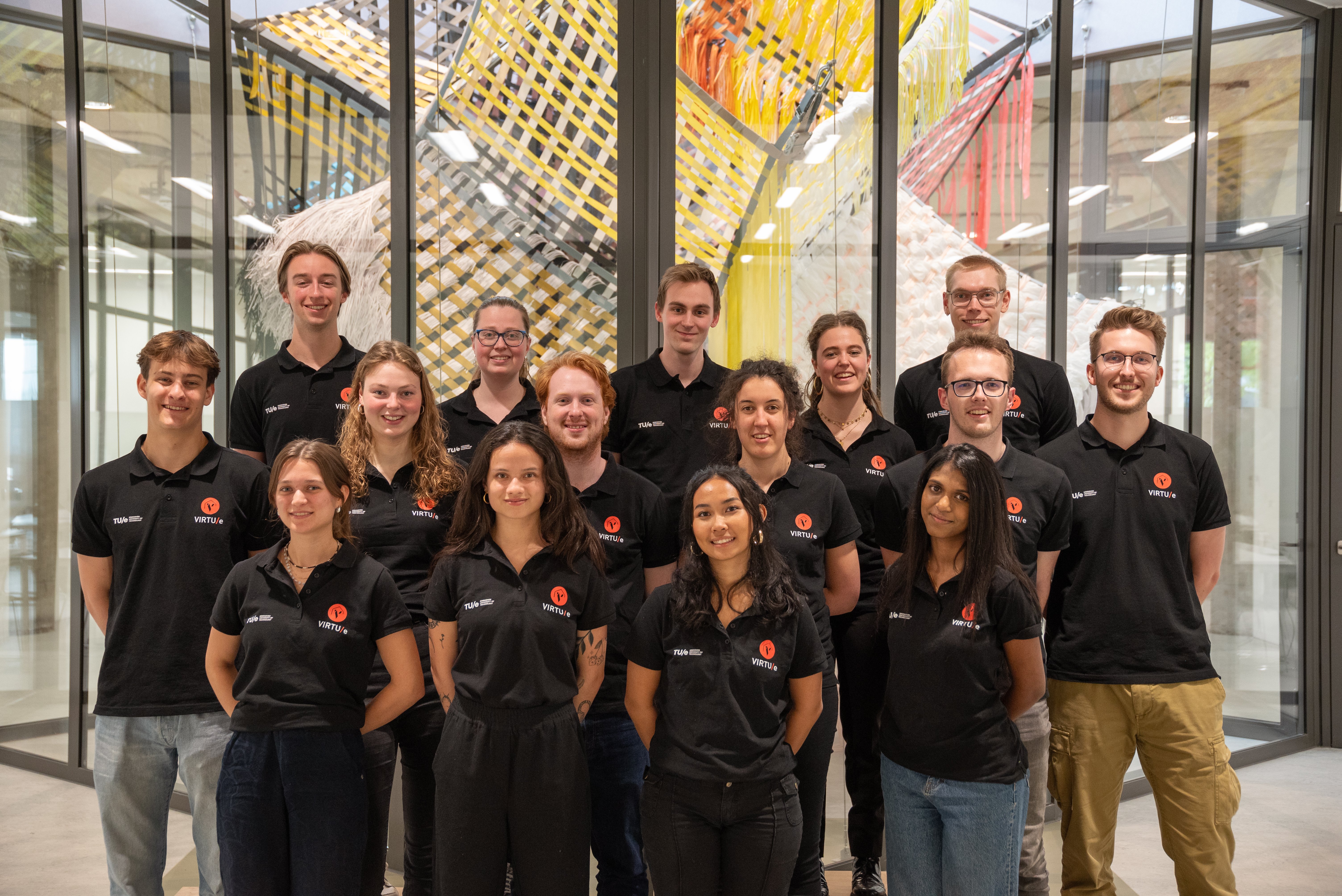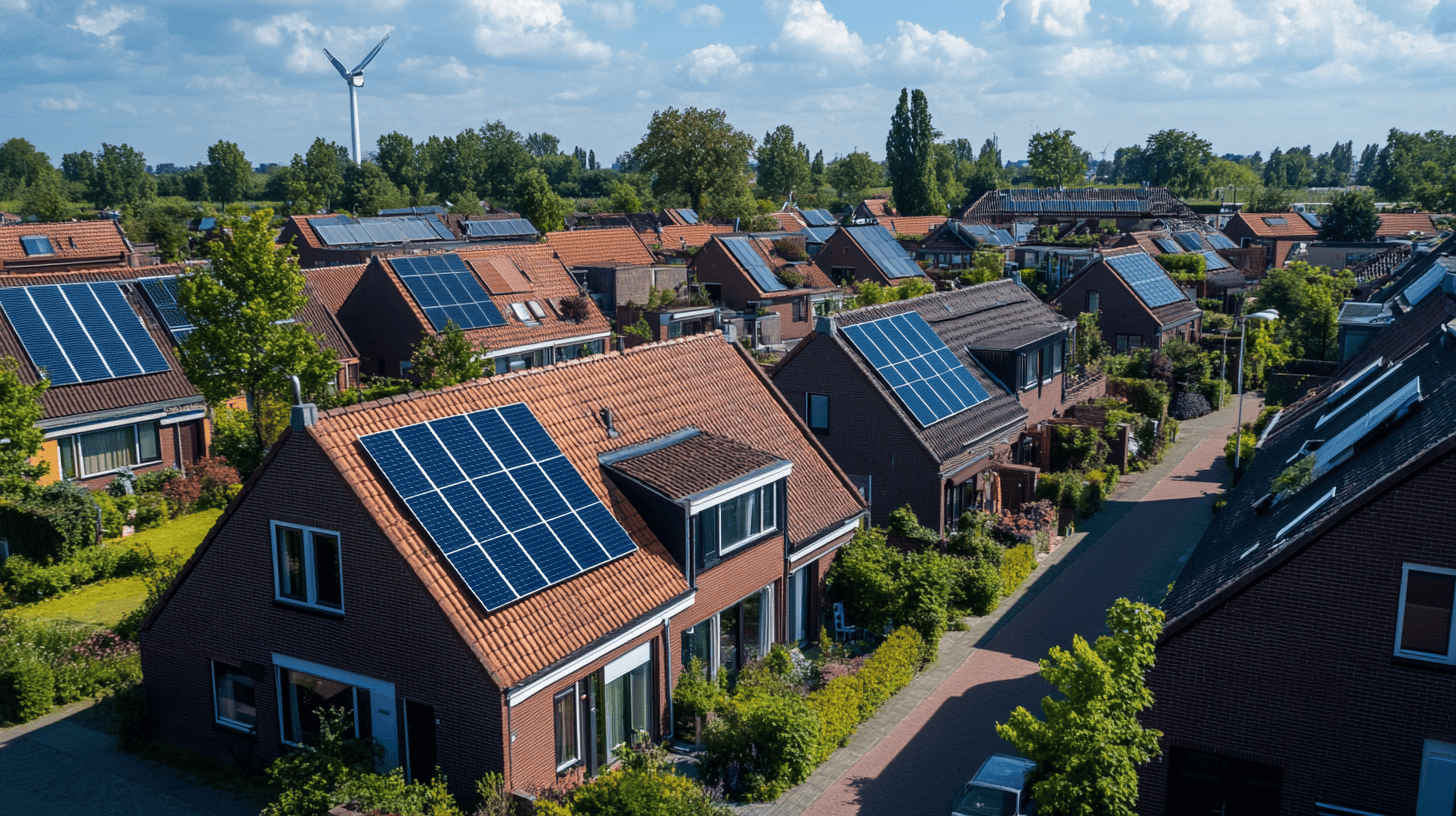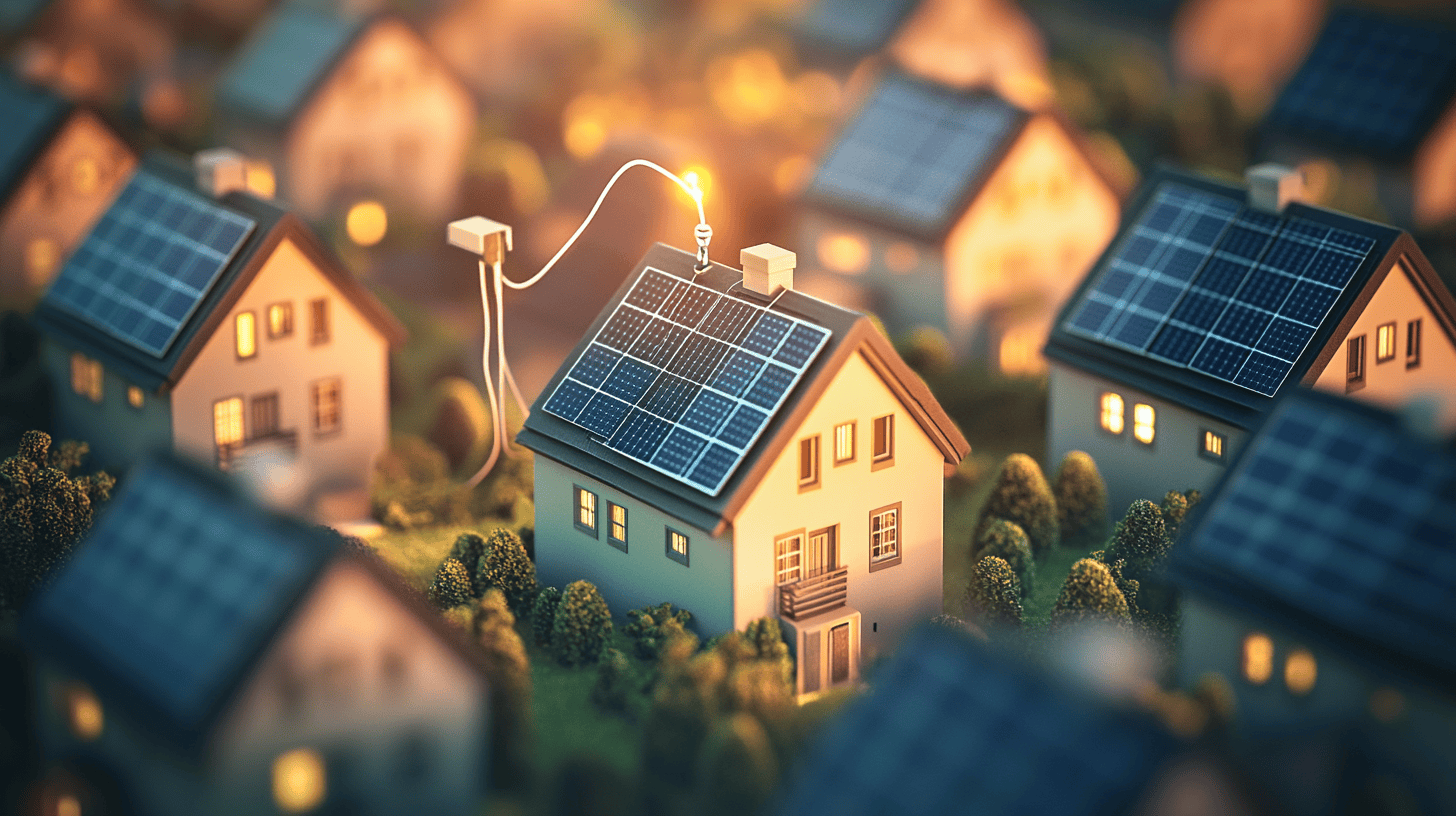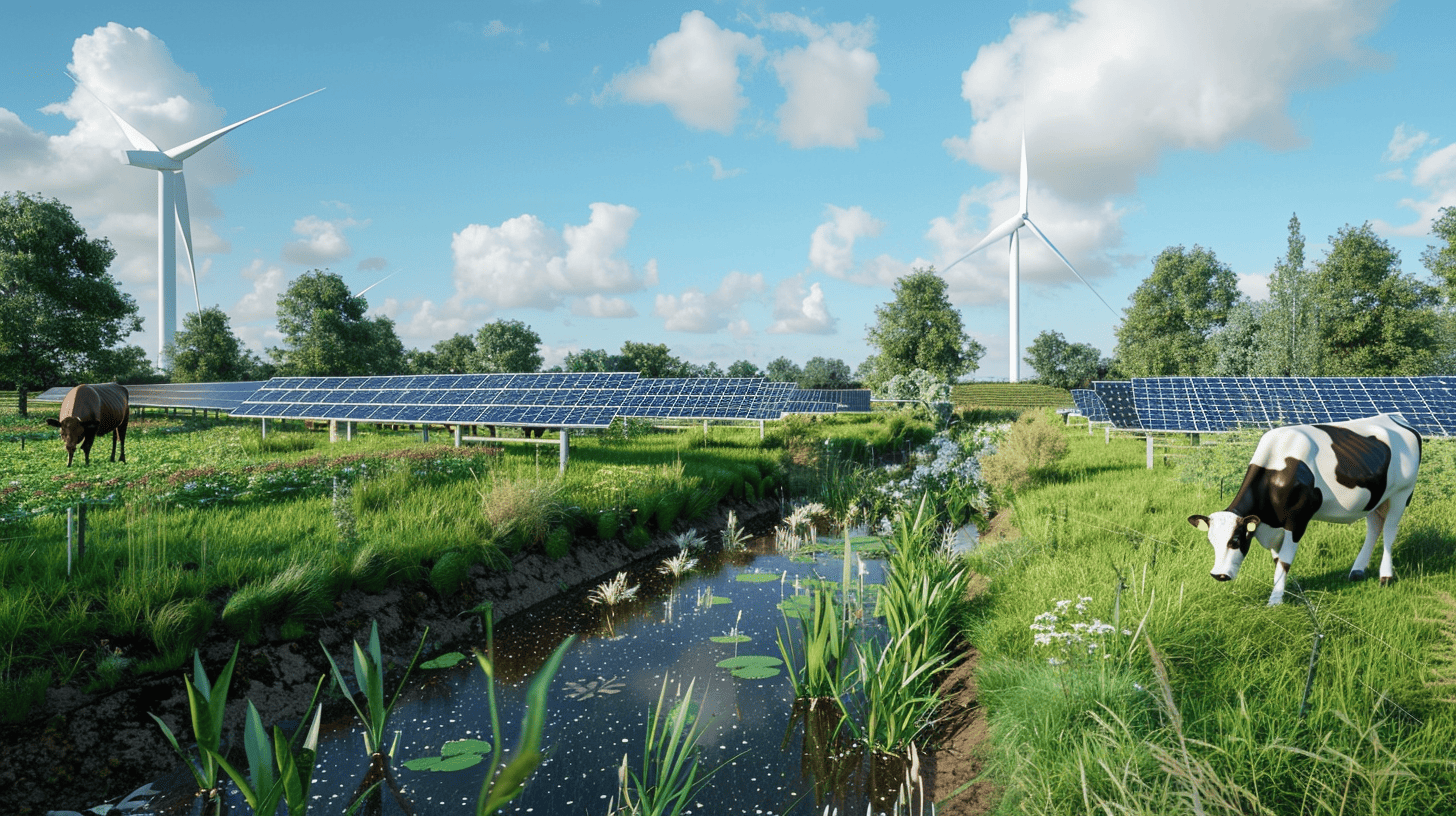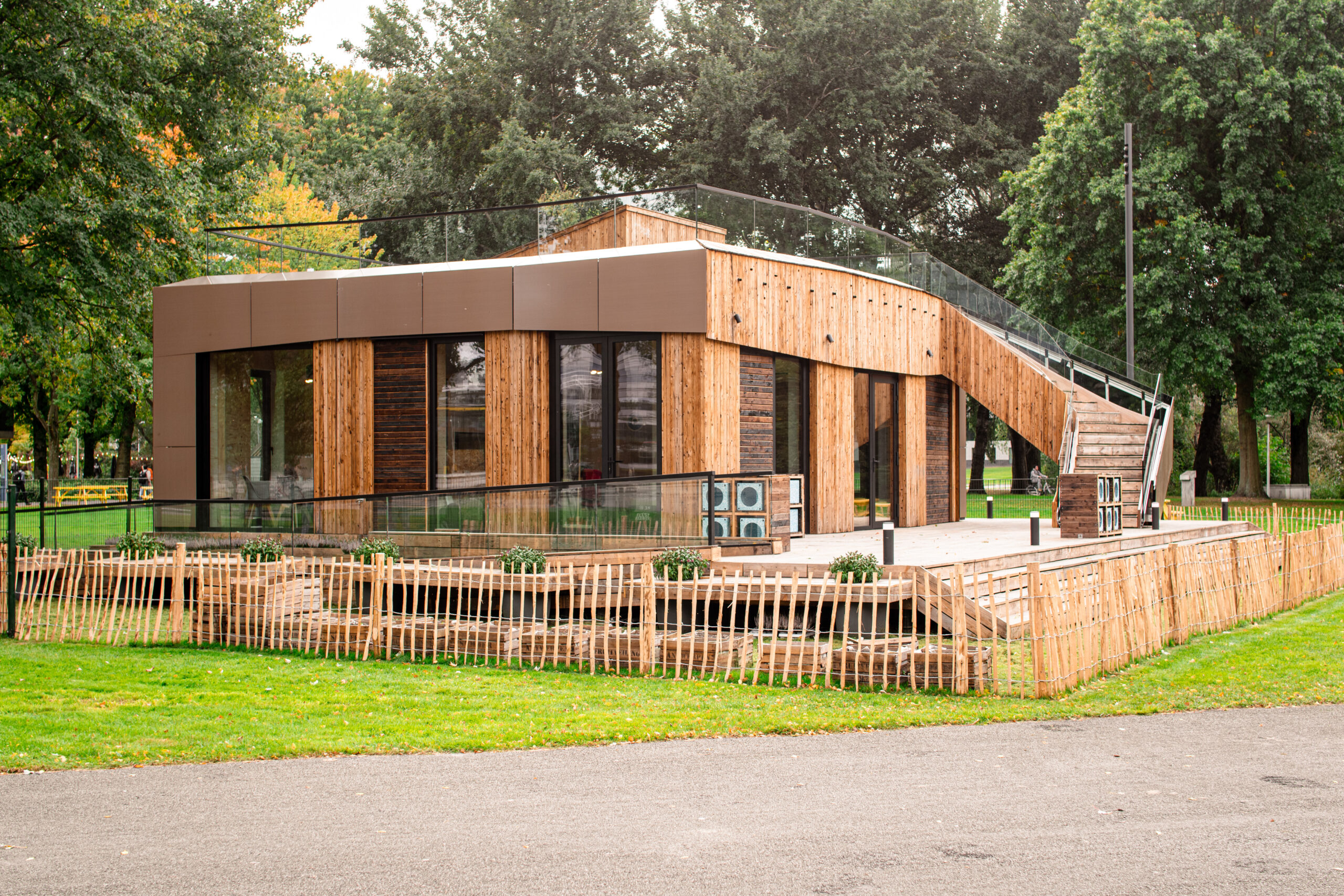
VIRTUe – a student team at the Technical University of Eindhoven – has developed ripple, a sustainable house model to reduce the carbon footprint and to create a new model for housing. Ripple uses sustainable materials and features shared facilities and is aimed at encouraging people to adapt to a more environmentally-friendly mindset.
Wood is the main component of the house, whose solar panels can both generate electricity and hot water. The housing unit can be combined with other ones to create a whole block. Its lightweight structure also makes it installable on top of existing buildings. VIRTUe’s concept addresses the housing problem in European cities by providing a flexible solution which is designed for young professionals.
Ripple is taking part in the Solar Decathlon Europe 2021 (SDE21). It is a university-level competition for resource-responsible and energy-efficient architecture and engineering. After 2 years of work, VIRTUe will face its competitors in June 2022 in the German city of Wuppertal.
“Our house is a prototype; it is an example that could be lived in right now. It represents the way we envision the houses and cities of the future”, explains Marianna Angelini, VIRTUe’s Communication Manager.
The same way as the ripple effect works, the project wants to have an influence on rethinking urban design. In VIRTUe’s idea, ripple housing units will create new living standards and a renewed connection with the city. For instance, mobility hubs outside the living units will accommodate different mobility options – shared cars, bikes and scooters – and will make the urban area more accessible to everyone.
Smart energy management
Repurposed wood covers the house. Each façade – except for the one to the north – has solar panels whose colour match the wood. The external stairs lead to the rooftop where there are other solar panels, a birds’ hotel and a biodiversity garden, as well as a space on the ground floor for growing vegetables.
In the gallery: a panoramic view of the house, the birds’ hotel, the single room, the shared area, the external cladding and the smart system’s interface.
The interior area is made up of two apartment spaces that share facilities. When first entering the house, there is the communal area, with a living room and kitchen. A round display is installed on the wall. This is the interface of the house’s smart system, showing the amount of electricity the solar panels have collected. The software combines weather forecast information too, indicating how much energy can be expected to be stored.
The system helps when it comes to doing daily chores by following the peaks when the sun shines. “This device can schedule the use of the dishwasher based on whenever there is plenty of sunlight”, says Willem Arts, VIRTUe’s spokesperson. “For instance, when you leave in the morning, you can tell the device to start the dishwasher when there is the most sun, so that it is done by the time you get back.”
The technical core is right in the middle of the house. That is where the boiler, the heat pump and the ventilation systems are. Having all technical systems in one place is the idea, so that any operations, maintenance and repairs can be done quickly and easily.
Also interesting: Mud houses’ made with cow manure as a cheap and sustainable solution
Flexible environment
Fixed, flexible and free elements are featured in each ripple unit. Only a few of them – those carrying the structure’s weight – fall under the first category, with all the others offering adaptable options. Depending on where the house is situated, solar panels can be easily relocated to a different façade. What’s more, is that it is also possible to change the position of the different modules within the house.
“One day the house might need to serve a different need. For this reason, our system allows for the toilet and the kitchen modules to be lifted out and put back in again. Walls can be also moved around depending on the needs someone may have”, Arts adds. Furniture is used in the space as efficiently as possible, with units that have beds with sets of drawers incorporated into them.
Ripple units can be rotated. In a step away from regular city blocks, units can be placed in different ways, despite being different from a square shape. At the same time, the blocks’ modularity is preserved.
Future is now
The project involved about 90 students coming from different faculties, bringing a range of expertise to the project. In addition to the architectural and the design teams, VIRTUe also has a communications and a human resources team.
In the following weeks, the team is organizing open days to visit the house, while they still have plenty of time to prepare for SDE21. “We still have to perfect the house, and colder days will be a good way to test it”, Arts goes on to say.
The ripple project has sparked the interest of several investors, who were keen to pursue this living and building concept, says VIRTUe. In designing the houses of tomorrow, this concept offered by the Dutch team opens up new ways of living.










